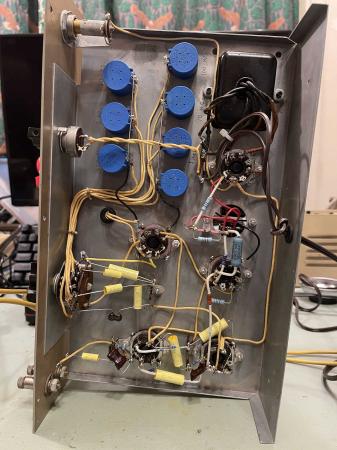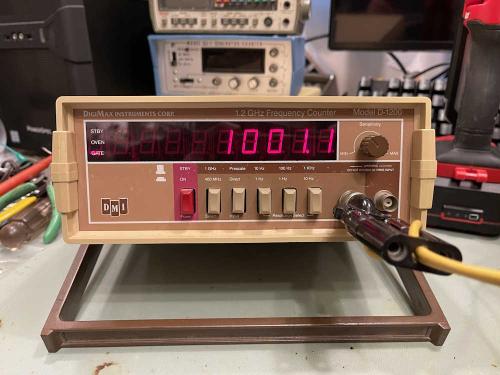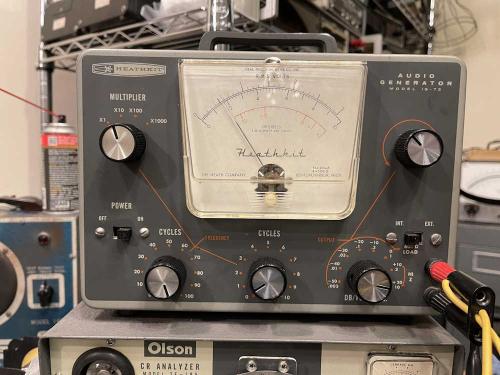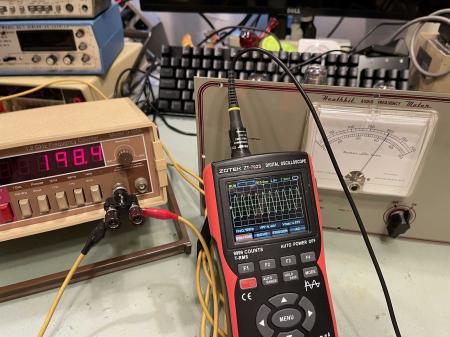- 2025
- Apr
- 10
The Heatkit AF-1 Analog Frequency Meter, Part 10 - Final assembly and test.
The final parts for the Heathkit AF-1 finally arrived, and have been installed. The compliment of potentiometers used for this device is:
100Hz - 200Ω
300Hz - 10kΩ
1kHz - 200Ω
3kHz - 5kΩ
10kHz - 200Ω
30kHz - 5kΩ
100kHz - 200Ω
Quite the interesting lineup. The only part I changed value of (from the original builder’s parts) was the 300Hz potentiometer. It needed just a little more range to dial it in. Why does it need this? The original schematic shows 200Ω parts for all sections.
The filters being used here are passive high-pass filters with a vacuum diode pair in the middle that both rectifies the signal in a half-wave configuration, as well as provides a small lift above ground so the unit isn’t triggered by transient noises. The potentiometers are the R component of the CR filter, so adjusting the pot changes the cutoff point of the filter. The filters aren’t very sharp to start with, and the diode and pulse waveform we have at that point doesn’t help much.
I really need to sit down with this thing and a scope and see what’s going on, because pure calculations don’t really add up to what I observe.
That leads us to testing. I’m not going to do a full characterization of this unit, because this has turned into more of a labor of love rather than me rebuilding somethig that’s going to sit on the bench. The device is just cool, it’s unique among test equipment, but it’s not terribly useful. Read on for more on that.
But, for this test, I’m going to be using my good ovenized counter,
as well as the Heathkit IG-72 I picked up at a show last year.
The IG-72 needed some minor repair before use, the potentiometers had become sticky and the signal had started to clip again. A quick cleaning and re-adjust brought that back where it should be.
Calibrating involved letting the device fully warm up, and selecting a frequency to calibrate. Since these are all high-pass filters, the device probably works best in the upper part of the band, and Heathkit confirmed that in the manual by telling us to select our calibration frequencies in that range - for example, it suggests calibrating the 100Hz band by picking up the 60Hz on the pilot lamp.
I have better equipment, so I chose 70 and 200, multiplied by band scale. The executive level summary for accuracy once the point was dialed in:
100Hz - Good
300Hz - Good
1kHz - Good
3kHz - Good
10kHz - Good
30kHz - Acceptable
100kHz - Marginal
So…does it work? Yes. It’s pretty stable. But that’s for a given value of “Does it work.”
I have some thoughts about this device and will publish them in a wrap-up post. Stay tuned!
Next part of this series: https://wereboar.com … -and-final-thoughts/
Previous part of this series: https://wereboar.com … testing-the-rebuild/



